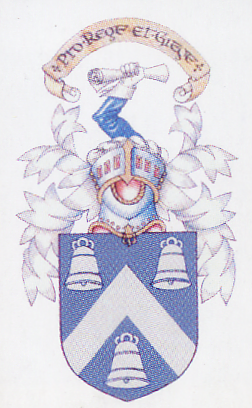|
The
Madras
College Magazine
for October 1956 reports:
The myth that the athlete and the scholar cannot co-exist
in the same person dies hard, in spite of the large number of
distinguished intellectuals who have excelled at games. Among these
many-sided champions, Dr. John Thompson, our new Rector, must be numbered.
Educated at Dunfermline High School, renowned for both scholarship and
games, he entered St. Andrews University in 1931 and graduated M.A. with
first-class honours in History. Post-graduate work at the Institute of
Historical Research and the Universities of London and Turin widened and
deepened his historical scholarship of which the advanced degree of Ph.D.
(St. Andrews) is the visible token. The famous progressive school Bedales,
in Hampshire, was the field where he won his educational spurs, and he
remained there till the outbreak of the Second World War in which he
served in the Royal Artillery (Field) from 1940 to 1946.
|
 |
After demobilisation with the rank of Captain, he acted
as VI. Form Tutor at Workington Grammar School, and from 1947 to 1955 he
was Principal Teacher of History in Daniel Stewart's College, Edinburgh,
another School famous for its cerebral and muscular prowess.
This is a very impressive record, and remembering that
Dr. Thompson has been equally at home in the boxing ring and the Rugger
field ; in the garden and on the ocean wave — although perhaps a little
less at home on the golf course ! — we find that his interests are so
varied and his culture so wide that
"he seems to be
Not one but all mankind's epitome."
He has the advancement of Madras College very much at
heart, and his sincerest wish, we are sure, is that the School should so
excel in scholarship as to continue its great tradition.
To that end, he has made revolutionary changes in the timetable, of
which our readers will now know the details and understand the purpose.
In Dr. Thompson we have an exceptional man, better
fitted than most to guide the School to success, and we should be
pleased and proud that he wished to become our Rector.
The
School
Newsletter for Christmas 1993 reports:
Dr. John Thompson
The sudden death on 20th November of Dr. John Thompson,
Rector of the school from 1955—1975, saddened the many former
colleagues, former pupils and friends to whom he was a well-kent and
well-loved figure. To those of us who were taught History by him, albeit
long ago and in another place, his influence extended beyond the
classroom and lasted long after school days were over. With him, it was
not just a case of imparting knowledge of his subject. His teaching had
that extra dimension from which pupils imperceptibly acquire attitudes,
values, independence of thought and breadth of view. As Rector of
Madras, he saw the school change from a small, selective senior
secondary into a large, modern comprehensive, a process made all the
more difficult by the split site and the amalgamation with the Burgh
School. The smoothness with which that long and complicated transition
took place is a lasting tribute to his managerial and inter-personal
skills, although he would undoubtedly have dismissed such jargon with
one of his pithy comments. Although he had an almost legendary
reputation as an expert arranger, he was no mere administrator. He had a
healthy disregard for bureaucracy in any form and nothing pleased him
better than following his own highly individual line, although it was
always for the good of the school and out of concern for the best
interests of staff and pupils. As with his own teaching, his vision and
wisdom were evident in the direction he gave the school. In practical
terms there is much we owe to him: he gave school music its present
strength by making instrumental tuition widely available; he set up the
Kiel Exchange, which almost 40 years ago was a remarkable innovation; he
acquired the cottage in Glen Tilt for school use; he began the push,
which is still ongoing, for improved library facilities; he put a
Guidance system in place several years before it was national policy;
and in the enlightened treatment of senior pupils, of which the S6
Committee structure is a prime example, he was also far ahead of his
time. It was even his idea to replace the previous unsightly gravel with
the now much admired front lawn. His exceptionally clear perception of
the school's future was balanced by his deep and detailed knowledge of
its history. These elements came together in the new Madras which grew
up on the split site. It did not slavishly follow the latest trends. It
did not always march to the beat of the Regional drum. In some ways it
was refreshingly unconventional; in others it was almost stubbornly
traditional. Its confidence in its own destiny provided it with the
strength and resilience to face an even more challenging future. The
distinctive ethos remains. The school, as we know it today, is still
very much John Thompson's creation. In remembering his educational
achievement, let us not forget the kind of man he was.
| Dr. Thompson wrote a book about the
history of the school 'The Madras College 1833-1983' |

|
|

